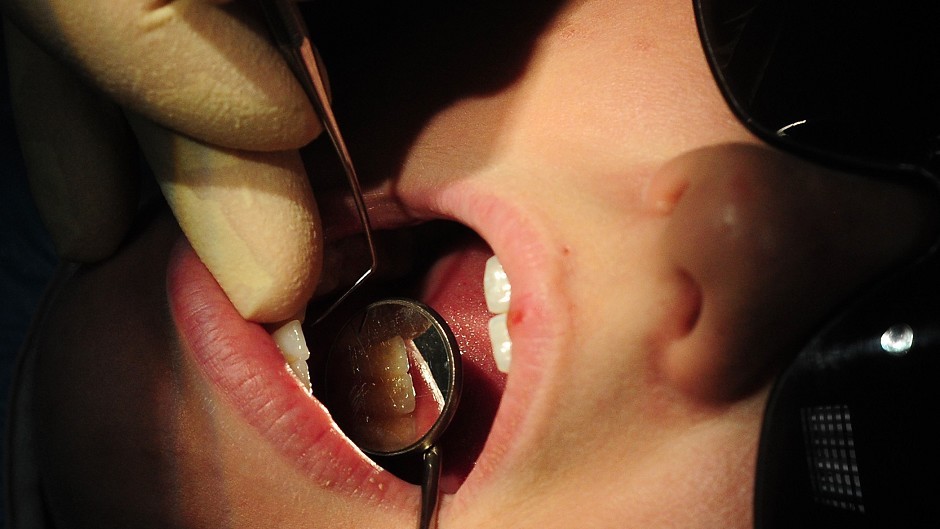Now, we’re not going to make any crazy statements such as “fruit is just as bad as sweets”, or, “juicing wrecks your teeth” – because that would be over-dramatic and misleading.
But it is true that dentists have noticed how certain healthy eating or weight-loss and detox trends are taking a toll on the nation’s dental health.
It’s even affecting children, with a recent report published by the Royal College of Surgeons stating record numbers of under-fives are having rotten teeth removed – with fruity snacks among the culprits.
So what are the health trends, “harmless” habits and diets causing damage, and what can you do to avoid it?
Hot water and lemon?
Starting the day with a hot water and fresh lemon – a traditional detox method – is seeing a popularity resurgence right now, with fans boasting flatter stomachs and glowing complexions as a result.
But Shona Wilkinson, nutritionist at SuperfoodUK.com, warns: “Watch out for the advice on drinking warm lemon juice in the mornings. Lemon juice can cause problems with the enamel on teeth. It is great to have warm water with lemon, but,” she suggests, “drink it through a straw to help prevent tooth damage.”
Munching ice
Zero calories for a satisfying crunch, but munching ice cubes isn’t as harmless as it seems.
“Some people add ice to their drinks to increase their hydration levels. This is great and anything which increases water intake is good, but don’t crunch or bite on the ice.
“This is a common habit, but can leave your teeth vulnerable to damage,” says Wilkinson. “Let the ice melt and sip your drink to help increase your hydration levels.”
Sirtfood stains
One of the more recent celeb-backed trends, the Sirtfood Diet, focuses on ingredients rich in sirtuin activators, said to keep cells healthy when under stress and aid in metabolic function – and coffee and red wine are on the menu.
“Drinks such as coffee and red wine are some of the worst culprits for teeth staining,” notes Dr Sameer Patel, clinical director at specialist dental and orthodontic practice, elleven.
“This staining is amplified when consumed on a regular basis, as tannin compounds build up and cause teeth to turn yellowish. To avoid the problem, rinse the mouth with water after consumption, to wash away tannins.”
Green tea
Packed full of health-boosting antioxidants, calorie and fat-free, it’s little wonder green tea has become so popular. But, while not as bad as coffee, it can cause staining. “Make sure you don’t swish the tea around your mouth, just drink it straight down,” advises Wilkinson.
Fruit smoothies and juices
It’s nonsense to demonise fruit – a vital source of nutrients and fibre – but the surge in popularity of juicing and smoothies, in regimes promising speedy weight-loss and detoxing, has impacted the nation’s dental health, leading to a rise in enamel erosion, sensitivity and decay.
“Natural sugars can erode tooth enamel and lead to decay,” says Dr Patel. “Fruit’s natural sugar, fructose, is a common cause of cavities as the bacteria in the mouth feed on it, so using a straw and keeping your mouth refreshed with regular glasses of water after consumption, is key.” Wilkinson adds:
“If you do have a fruit juice, drink it through a straw to help prevent this damage. Even better – swap to a vegetable smoothie.” This often applies to sports drinks, too.
Natural sugar
Consuming too much natural sugar can also be a factor in poor gum health. “Diets which promote a high sugar intake can cause insulin levels to peak and then plummet which, over time, alters the structure of collagen in the body and in the long-term can affect your gums, as it’s collagen fibres that hold your teeth in place,” says Dr Patel.
“To limit damage, drink juices through a straw and try to wait at least 30 minutes before brushing your teeth after eating/drinking. It’s also important to ensure you’re brushing teeth up to the gum line, to remove trapped food and bacteria.”
High-protein / Low-carb
Drastically cutting calories, as well as following a high-protein/low-carb diet, can both cause bad breath – due to chemicals, called ketones, being released when you force your body into the fat-burning state of ketosis (remember when Atkins first got popular and everyone was talking about this?).
Good oral hygiene helps keep bad breath at bay, but if it’s down to your diet, Dr Patel advises: “Ketosis is brought on entirely by your diet and, unfortunately, no amount of flossing and brushing will combat the smell, so think twice before cutting out carbs completely and stick to healthy ones, such as wholemeal pasta and wholemeal bread to keep bad breath at bay.”
Nutritional shortfalls
It’s not just a case of what you do eat, but what you don’t eat – and falling into the trap of constant dieting, calorie-cutting and eliminating food groups can lead to nutritional deficiencies, including vitamins, iron and calcium, which are all-important for maintaining healthy teeth and gums.
A balanced diet, and two litres of water a day, is the best bet, along with good quality supplements if your diet is lacking. If you do want to lose weight, slow and steady wins the race.
